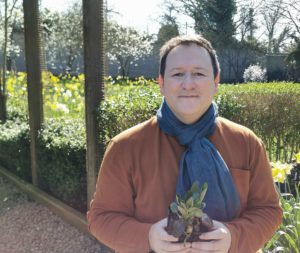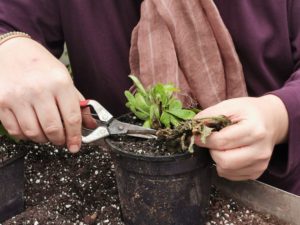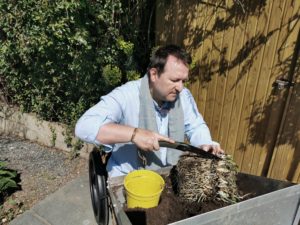This Week’s Guest Blogger is Dustin Pope the President of Tree Doctor USA – a team of certified arborists who offer tree and plant care services.
How to keep your trees disease-free?

Keeping your trees and bushes in good health requires severe prevention measures. Tending to insects, pests and illness issues at the beginning is vital to guaranteeing healthy trees across all seasons. By forestalling illness and pest infections before they happen as opposed to figuring out the arrangement later on, you can save many dollars on pesticides and receive the rewards of a noteworthy scene.
Starting off bright and early on managing bug and sickness issues can have a significant effect between lovely, sound greenery scenes and one that is tormented by issues all season, every season. By zeroing in on prevention, rather than responding to illness and bug invasion when it occurs, you can protect your green buddies as well as deflect any financial liability.
Prevention includes various advances, including appropriate checking, plant care, and treatment. It regularly follows a methodology called Integrated Pest Management (IPM).
This smoothed out, biological way to deal with bothering the executives gives more successful outcomes less requirement for destructive synthetics. At last, results are more fruitful and the interaction is more secure for individuals, pets, and the climate. This article talks about the Best Plant Health Care Services to keep your plants and trees in a perfect condition.
Plant Diseases That Require Attention-
The following are probably the most well-known illnesses that plague trees and bushes:
-
Leaf spot sickness – They make spots on the leaves of trees and bushes. Leaf spots can be tanish, tan, or dark and make dull spotting on leaves.
-
Apple scab – This leads apple and crab apple trees to rashly shed their leaves during pre-summer and late-spring. A tree impacted by apple scab will have leaves with brown and dark spots.
-
Dark bunch – This sickness makes a delicate, olive-green matter around the twigs which in the end changes to hard dark bunches when fall comes. Dark bunch regularly contaminates the leafy foods. This sickness can kill off a tree if treatment is not received.
-
Anthracnose – Sometimes misdiagnosed as oak shrivel, anthracnose makes the leaves foster dry, brown, and smeared spots before they drop. Anthacrose can assault trees and bushes right off the bat in the season.
-
Cytospora infection – This sickness causes discolouration on specific spaces of a tree’s trunk and branches. Normal among trees matured 15 years and more seasoned, cytospora ulcer can turn a tree’s needles to brown and kill its lower branches.
Integrated Pest Management : How does that work?
Integrated Pest Management includes the utilisation of specific techniques in battling irritations and infections. These techniques reliably screen bug populaces for sure fire activity, appropriate plant care works on, establishing nuisance safe plant assortments, and right treatment draws near (depending on the situation). The objective of Integrated Pest Management (IPM) is to foster early and long haul counteraction of nuisances and infections. Assuming nuisance populaces are diminished or dispensed with toward the start, they won’t cause monstrous harm in your nursery/yard.
The following steps can ensure that your trees live long and healthy lives. It is better to avail the Best Plant Health Care Services to account for the same.
-
Monitoring-
Monitoring your plants consistently permits you to identify early indications of nuisance invasion when populaces are still low and simple to take out. At this stage, you can intrude on their development before they gain out of influence. For example, distinguishing the presence of mountain pine bugs. The ideal opportunity to screen these vermin is in the cold weather months.
You would realise they’re taking safe houses in a tree when you notice “pitch tubes” on the trunks. In case you see these pitch tubes, remove a piece of bark and check for discoloration of the wood under the bark (somewhat bluish grey). Provided that this is true, you really want to call an arborist to have the tree eliminated. Customary observance of pine trees in winter and quickly eliminating invaded trees keeps the creepy crawlies from harming adjoining trees. That is the reason coordinated checking and moment activity has a tremendous effect in keeping your trees and bushes sound.
-
Appropriate Plant Care Practises-
Insects and pests are controllable just by adhering to good tree and plant care practises.
It is just about as straightforward as keeping up with neatness and keeping your plants and beds all around tended to. This can keep creepy crawlies and irritations under control. Pivoting your yearly harvests to various pieces of the nursery consistently limits specific vermin issues. Tidying up old leaf litter on the foundation of plants is a successful method for warding off risky creepy crawlies. Noticing the ideal opportunity to establish trees and bushes to stay away from the rise of explicit kinds of bugs additionally brings down the danger of plant harm.
It additionally pays to keep your plants all around hydrated consistently. Particularly in the hotter months, as dried out and worried plants are more inclined to harm. If necessary, change the dirt preceding planting and apply natural matter consistently. Put a thick layer of natural mulch to forestall the development of weeds and hold dampness. Take additional consideration of recently established plants, just as trees and bushes that have supported harm.
-
Adhering to proper planting techniques-
The following are some basic plant care practises that helps in preserving their good health :
-
Plant varieties that can endure pest infections- As a rule, there is a safe assortment reproduced for a well known plant that is helpless to explicit irritations. You may likewise need to pick assortments that are more hearty, energetic, and impervious to numerous nuisances.
-
Plant the right kind of plants in the right space- Each plant has a dirt, daylight, dampness, temperature, and space prerequisite to accomplish ideal development. Jumbling a plant to an off-base area or conditions will just pressure it and cause the plant to turn into a simple prey for bugs and illnesses.
-
Consider a wide range of plant variety- When pests/insects like the Mountain Pine Beetle invade your plants, they might possibly annihilate a whole gathering of trees and bushes. This is the reason it’s fundamental to develop numerous sorts of plants, trees, and bushes to guarantee you will have something left assuming the bugs harm your plants. Having different plants in your nursery or yard likewise works on the overall look of your scene.
-
Acknowledge the treatment required-
Before you resort to applying substance medicines like insect sprays, see whether there are “organic controls” accessible. The most widely recognized illustration of organic controls utilised in homes are gainful bugs. They are garden-accommodating bugs like ladybugs, asking mantis, parasitic wasps, and lacewings, that can eat up enormous quantities of bugs in a given time. You might need to dump the pesticides to let the beneficials deal with the bugs.
Assuming utilising natural controls can’t get the job done and more forceful nuisance control measures are required, don’t stop for a second to call a tree bug or tree sickness master. They are furnished with the right devices and skill to analyse an issue and recommend the best and eco-accommodating arrangements.
-
Diagnosis of trees and shrubs-
Assuming you experience issues telling whether or not your trees and bushes are unhealthy, it’s a good thought to call some tree experts.
Some tips to help you keep your trees disease-free
At the point when you realise how to perceive vermin or infection, you’ll regularly observe that you’re ready to distinguish issues while they’re in the beginning phases.

-
Select bug safe varieties
Headways in science and innovation have made it workable for bug safe assortments of many plants to be created. Assuming you need to establish something especially inclined to bug or sickness, it might be a smart thought to choose the vermin resistant variety that is more grounded and more sturdy.
-
Pick the perfect place
Various kinds of plants and trees have various inclinations with regards to soil, dampness, daylight, and the sky’s the limit from there. You must pick the perfect place. Some unacceptable spot might put it under pressure and hold it back from flourishing.
-
Apply medicines when vital
Few out of every odd creepy crawly that you spot in your yard is awful. There are a lot of things like ladybugs, lacewings, and imploring mantids. And more that assist you with keeping your plants and trees solid by eating risky vermin. There is positively an appropriate setting for bug sprays. Be that as it may, assuming you detect these nursery well disposed creepy crawlies, allow them an opportunity to do what they specialise in first.
-
Acquire the specialists
You can do a considerable amount to forestall other invasions and sickness from going to your yard all alone. Be that as it may, there are most certainly times when you’ll have to get the specialists. Tree care experts can assist you with tending to your plant and tree issues while limiting harm.
Conclusion
Arranging your nursery so that you’re planting perfectly located is significant for developing solid plants. Yet all things being equal, irritations and illnesses can scupper your great work. Getting issues early is vital to keeping your nursery bug-and infection free. While you’re watering the plants, watch out for brown, twisted or stained leaves, openings in leaves. Moreover for stems that have kicked the bucket.
Please click on the link below to find out more Tree Doctor USA

 My love of plants and gardens began when I lived in New Zealand as a child. I remember going into habitats with tree ferns and subtropical rainforests where you could walk into spaces that were green and they smelt different, felt different. It gave me a real connection with nature.
My love of plants and gardens began when I lived in New Zealand as a child. I remember going into habitats with tree ferns and subtropical rainforests where you could walk into spaces that were green and they smelt different, felt different. It gave me a real connection with nature.
























